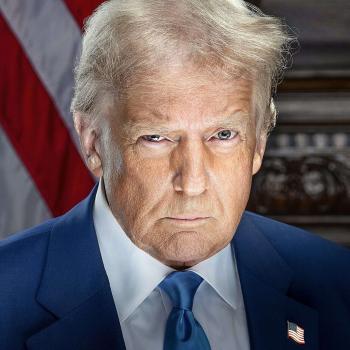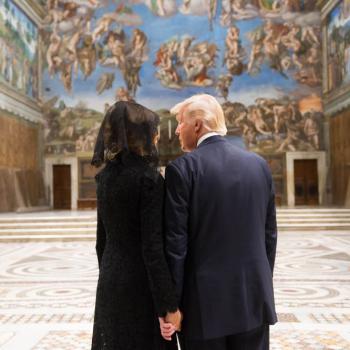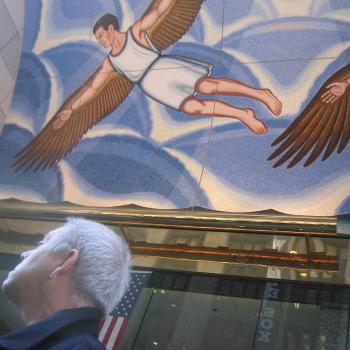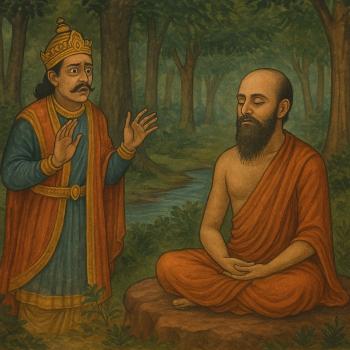Editors' Note: This article is part of the Public Square 2014 Summer Series: Conversations on Religious Trends. Read other perspectives from the Mormon community here.
In the recent conversations surrounding the ordination of women in the LDS church, it has been claimed by some that Joseph Smith envisioned assimilating women into the male priesthood. A close reading of the inaugural meeting of the Female Relief Society of Nauvoo, however, suggests that Mormon women were originally established in an organization that Joseph Smith envisioned as parallel to and collaborative with the male priesthood. In this Female Relief Society, influenced by the Masonic ideals of Truth, Friendship, and Relief, members were accorded autonomy to run their own organization with their own authority and privileges. (Don Bradley has illuminated these connections in "The Grand Fundamental Principles of Mormonism: Joseph Smith's Unfinished Reformation," Sunstone [April 2006]: 32-41.)
Joseph Smith's grand project of forging a kingdom of priests as in Enoch's day found its final and fullest expression in temple-building and temple ordinances. His soteriology involved a revisiting of the ancient concept of theosis, or divinization. In the temple, the rituals preparatory to becoming like God were performed; those priesthood ordinances are administered to men and women, and by both men and women. In fact, the Mormon definition of Deity itself, in reference to both the God Mormons worship and the theosis to which they aspire, entails the full co-participation of man and woman.
In this scheme, the LDS women's organization as an effectual female priesthood in counterpart to the male priesthood, already established, was vital. "I have desired to organize the Sisters in the order of the Priesthood. I now have the key by which I can do it. The organization of the Church of Christ was never perfect until the women were organized," declared Joseph. (See Sarah Kimball, "Relief Society Record, 1880-1892," 29-30, Church History Library.)
Eliza Snow understood Joseph to mean that female leadership was endowed with authority commensurate with their male counterparts: "The Relief Society is designed to be a self-governing organization: to relieve the Bishops as well as to relieve the poor, to deal with its members, correct abuses, etc. If difficulties arise between [female] members of a branch ... the matter should be referred to their president and her counselors." (emphasis mine) (See Eliza R. Snow, Woman's Exponent, 13 [15 Sept. 1884] quoted in Maxine Hanks, Women and Authority: Re-emerging Mormon Feminism [Salt Lake City: Signature, 1992], 85.)
Joseph also "propos'd that the Sisters elect a presiding officer to preside over them, and let that presiding officer [tellingly denominated "presidentess"] choose two Counsellors to assist in the duties of her Office." (See Relief Society Minute Book, 7.) Both relief societies—male and female—would have identical presidencies. That Joseph clearly intended the female presidency to exercise complete autonomy in their institution is noted in his instructions that "If the sisters needed the prophet's instruction," they were to "ask him [and] he will give it." (emphasis mine) It was also apparent to Joseph that just as he had been called by God to be the First Elder or the first male Relief Society President, Emma had been called by God to be the Elect Lady or first female Relief Society President. (See Don Bradley, "Elder and Elect Lady: Male and Female Authority in the July 1830 Revelations," presented at the John Whitmer Historical Association Conference, September 2013.) Both Societies were destined jointly to exhort the church and administer to the poor.
Rather than organizing the Relief Society according to male priesthood rankings, Joseph divested that prerogative to Emma as part and parcel of the priesthood key he turned over to her. "If (emphasis mine) any Officers are wanted to carry out the designs of the Institution, let them be appointed and set apart, as Deacons, Teachers &c. are among us." The Elect Lady chose not to implement the male pattern. It is very possible that Emma preferred the more horizontally orientated structures of female co-operation and friendship, to appropriating a male model dependent on verticality and hierarchy.
However, the full development of the Female Relief Society was curtailed amidst the contention between the First Elder and the Elect Lady over the issue of polygamy. Brigham Young's daughter, Susa Young Gates observed: "The privileges and powers outlined by the Prophet in those first meetings have never been granted to women in full even yet." (See Cheryl L. Bruno, "Keeping a Secret: Freemasonry, Polygamy, and the Nauvoo Relief Society, 1842-1844," Journal of Mormon History [Fall 2013]: 176.) As a fuller, more accurate LDS history is excavated, there is an increasing feeling of loss and a consequent unease about women's position in the current church structure together with a hunger for the rights and privileges committed to Presidentess Emma Smith, and the Female Relief Society on Thursday, March 17, 1842.




